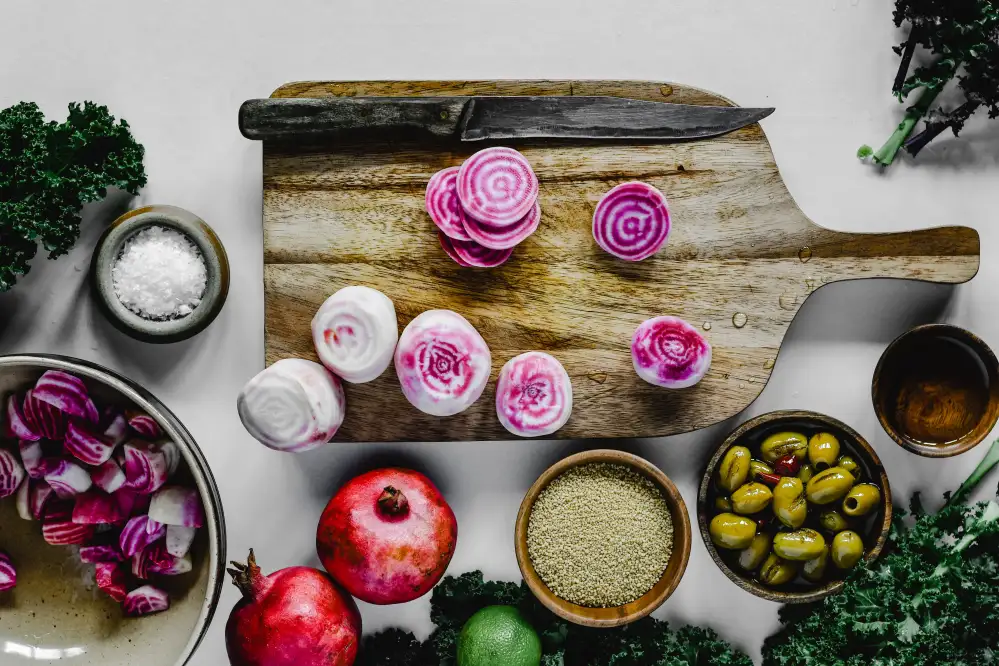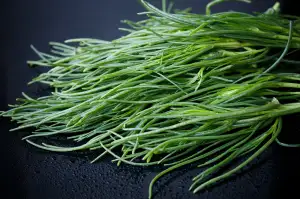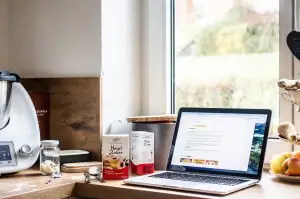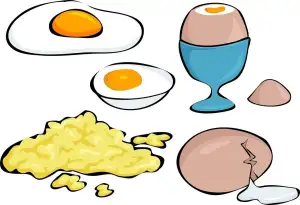Preserving the Vibrant Flavor: A Step-by-Step Guide on How to Pickle Beets

Pickling beets is a wonderful way to preserve their vibrant flavor and enjoy them all year round. This ancient preservation technique not only extends the shelf life of beets but also enhances their taste with a tangy and slightly sweet brine. Whether you're a seasoned pickler or new to the world of preserving, this step-by-step guide will help you master the art of pickling beets and add a burst of flavor to your meals. So let's dive in and discover the secrets behind this delightful culinary tradition!
Gather the necessary ingredients for pickling beets
To begin the process of pickling beets, it is essential to gather all the necessary ingredients. Here's a list of what you'll need:
- Fresh beets: Choose small to medium-sized beets that are firm and free from blemishes.
- Vinegar: Opt for white vinegar or apple cider vinegar for a tangy flavor.
- Water: Use filtered water for best results.
- Sugar: This will balance out the acidity and add a touch of sweetness to the pickling brine.
- Salt: Enhances the flavors and acts as a preservative.
- Spices: Get creative with spices like cloves, cinnamon sticks, peppercorns, or bay leaves to add depth and complexity.
- Jars: Select clean glass jars with tight-fitting lids that are suitable for canning.
Having these ingredients ready will ensure a smooth and efficient pickling process. So let's move on to preparing the beets!
Prepare the beets for pickling
To prepare the beets for pickling, start by washing them thoroughly under cold running water to remove any dirt or debris. Trim off the beet greens, leaving about an inch of the stems intact. This will prevent the beets from bleeding too much color during cooking. Next, place the beets in a large pot and cover them with water. Bring the water to a boil and cook the beets until they are tender when pierced with a fork, usually around 30-40 minutes depending on their size. Once cooked, drain the beets and allow them to cool slightly before handling. Finally, use your hands or a paring knife to gently peel off the skin from each beet. The skin should come off easily at this point. Trim off any remaining stem or root ends if desired. Your beets are now ready to be packed into jars for pickling!
Create the pickling brine
To create the pickling brine for your beets, you will need a combination of vinegar, water, sugar, and spices. In a large saucepan, combine equal parts vinegar and water. For every cup of liquid, add 1/4 cup of sugar to balance the acidity. Stir the mixture over medium heat until the sugar dissolves completely. Next, add your desired spices such as whole cloves, cinnamon sticks, or peppercorns to infuse flavor into the brine. Bring the mixture to a gentle boil and let it simmer for about 10 minutes to allow the flavors to meld together. Once done, remove the brine from heat and let it cool before using it to pickle your beets.
Sterilize the jars for pickling
To ensure the safety and longevity of your pickled beets, it is crucial to sterilize the jars before packing them. Sterilization kills any bacteria or microorganisms that could spoil the pickles. Start by washing the jars and lids with hot soapy water, then rinse thoroughly. Next, place the jars and lids in a large pot filled with enough water to cover them completely. Bring the water to a boil and let it simmer for 10 minutes. Carefully remove the jars from the pot using tongs and place them upside down on a clean towel to dry. The lids can be left in the hot water until ready to use. Properly sterilized jars will create an ideal environment for preserving your vibrant beet pickles.
Pack the beets into the jars
To pack the beets into the jars, carefully place the cooked and cooled beets into the sterilized jars. Make sure to leave about 1 inch of headspace at the top of each jar. Use a spoon or fork to gently press down on the beets, allowing any air bubbles to escape. Pack them tightly but not too tightly, as you want to ensure that the pickling brine can fully penetrate the beets. Once all the jars are filled with beets, it's time to move on to the next step: pouring the pickling brine over the beets.
Pour the pickling brine over the beets
Once you have packed the beets into the jars, it's time to pour the pickling brine over them. Make sure the brine is still hot, as this will help preserve the vibrant flavor of the beets. Slowly pour the brine into each jar, ensuring that all the beets are completely covered. Leave about half an inch of headspace at the top of each jar to allow for expansion during the pickling process. Use a clean knife or spatula to remove any air bubbles that may have formed. Once all the jars are filled with brine and beets, wipe off any spills or drips from the rims of the jars to ensure a proper seal.
Seal and store the pickled beets
Sealing and storing the pickled beets is a crucial step to ensure their long-lasting freshness and flavor. Once you have packed the beets into the jars and poured the pickling brine over them, it's time to seal the jars properly.
First, wipe the rims of the jars clean with a damp cloth to remove any residue or spills. This will help create a tight seal. Then, place the lids on top of each jar, making sure they are centered.
Next, screw on the bands firmly but not too tight. The bands should be snug enough to hold the lids in place during storage but not so tight that air cannot escape from inside the jars.
Now it's time to process the jars for long-term storage. There are two methods you can choose from: water bath canning or pressure canning. The method you use will depend on your preference and safety guidelines.
If you opt for water bath canning, carefully lower the filled jars into a large pot of boiling water using jar tongs. Make sure there is enough water to cover the jars by at least one inch. Process them according to your recipe's instructions, usually around 10-15 minutes.
For pressure canning, follow your pressure canner's instructions for processing times and pressures specific to pickled beets.
After processing, carefully remove the jars from the pot or canner using jar tongs and place them on a towel-lined countertop. Allow them to cool completely undisturbed for 12-24 hours.
Once cooled, check that each jar has sealed properly by pressing down on the center of each lid. If it doesn't move or make a popping sound, it is sealed correctly. Any unsealed jars should be refrigerated and consumed within a few weeks.
Label each jar with the date of pickling before storing them in a cool, dark place such as a pantry or cellar. Properly sealed and stored pickled beets can last up to a year, although they are best enjoyed within the first 3-6 months for optimal flavor.
Remember to always inspect the jars before consuming. If you notice any signs of spoilage such as mold, off odors, or cloudy liquid, discard the contents immediately.
Sealing and storing pickled beets properly will ensure that their vibrant flavors are preserved for months to come, allowing you to enjoy their tangy goodness in various dishes and snacks throughout the year.
Tips for serving and enjoying pickled beets
1. Allow the pickled beets to marinate for at least 24 hours before consuming to enhance the flavor.
2. Serve pickled beets as a side dish or condiment alongside grilled meats, sandwiches, or salads.
3. Add pickled beets to charcuterie boards or cheese platters for a vibrant and tangy addition.
4. Incorporate pickled beets into your favorite recipes like beet hummus, beet burgers, or beet salad.
5. Experiment with different spices and herbs in the brine to customize the flavor profile of your pickled beets.
6. Store opened jars of pickled beets in the refrigerator and consume within a month for optimal freshness.
7. Use the leftover pickling brine as a marinade for other vegetables or as a tangy dressing for salads.
8. Get creative with presentation by slicing the pickled beets into thin rounds or julienne strips before serving.
9. Don't limit yourself to just red beets - try pickling golden or Chioggia (candy cane) beets for an array of colors on your plate.
10. Enjoy the unique combination of sweet, tangy, and earthy flavors that pickled beets bring to your culinary creations!
In conclusion, pickling beets is a wonderful way to preserve their vibrant flavor and add a tangy twist to your meals. By following this step-by-step guide, you can easily pickle beets at home and enjoy them throughout the year. The process may seem daunting at first, but with practice, you'll become an expert pickler. Experiment with different spices and herbs to create unique flavor profiles. Whether you enjoy them on their own, in salads, or as a side dish, pickled beets are sure to impress your taste buds. So why not give it a try and savor the deliciousness of homemade pickled beets?
Published: 05. 02. 2024
Category: Recipes



